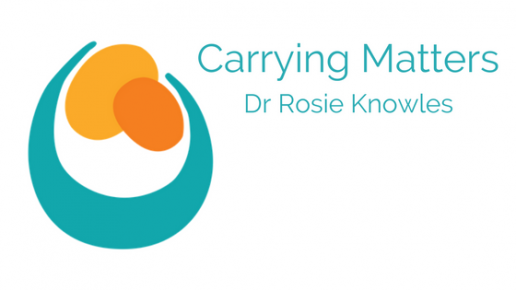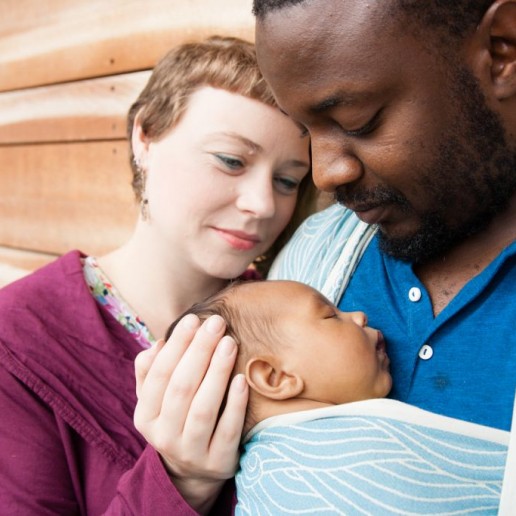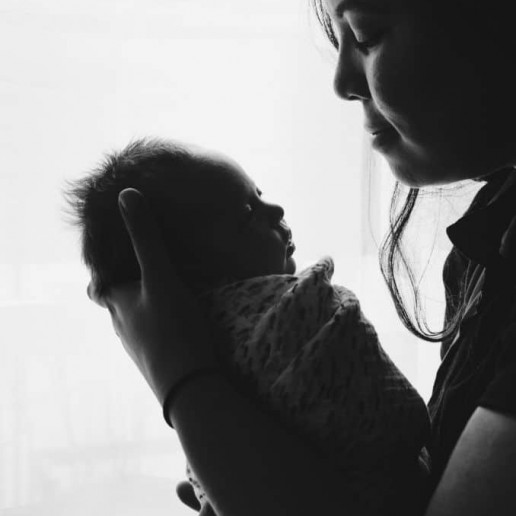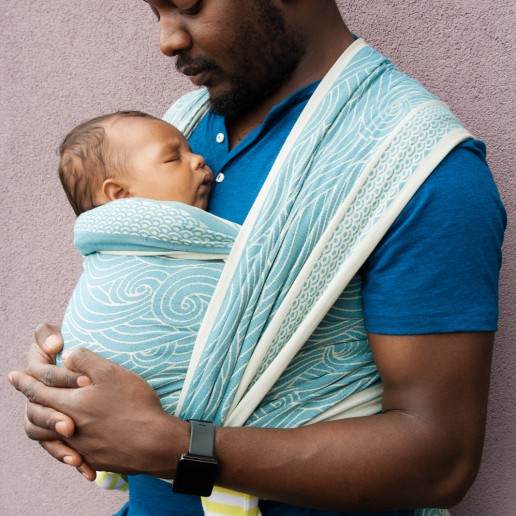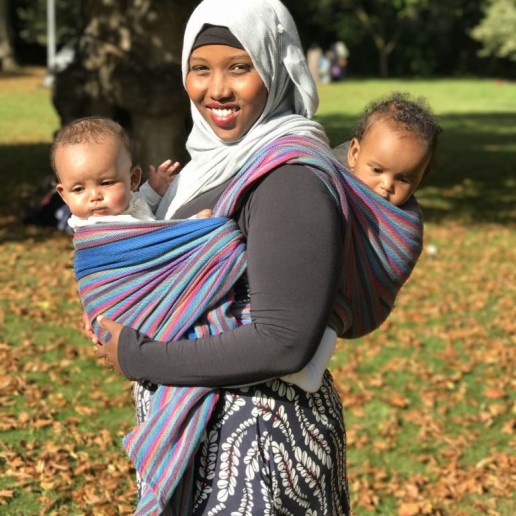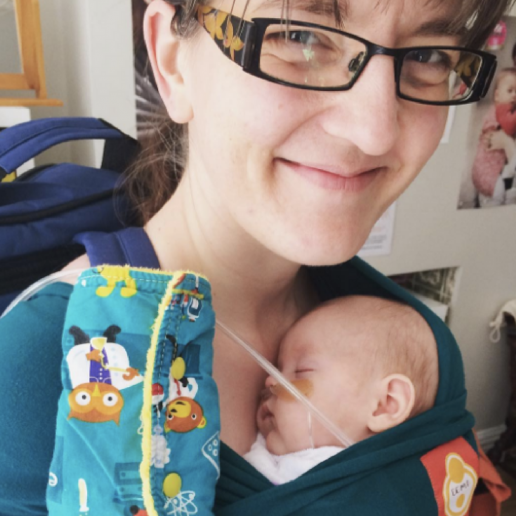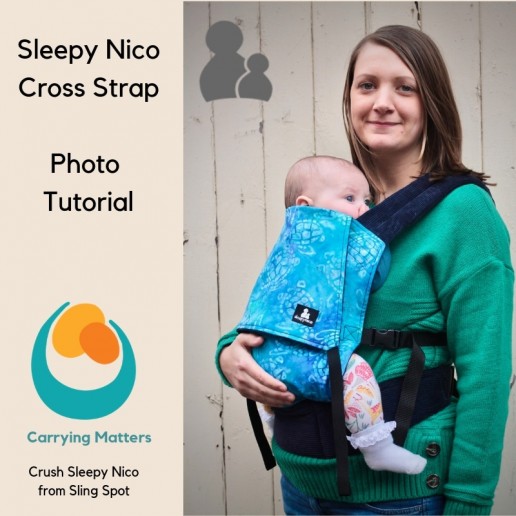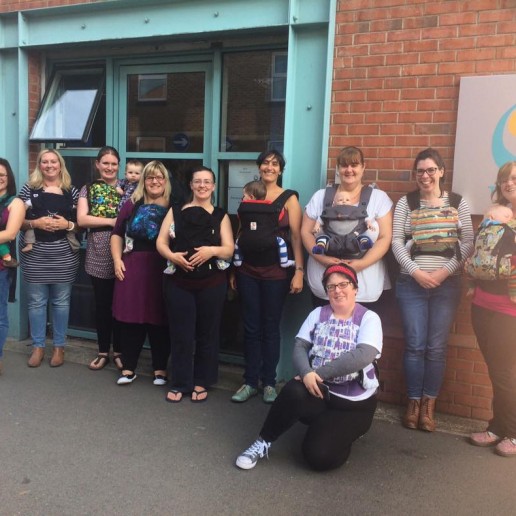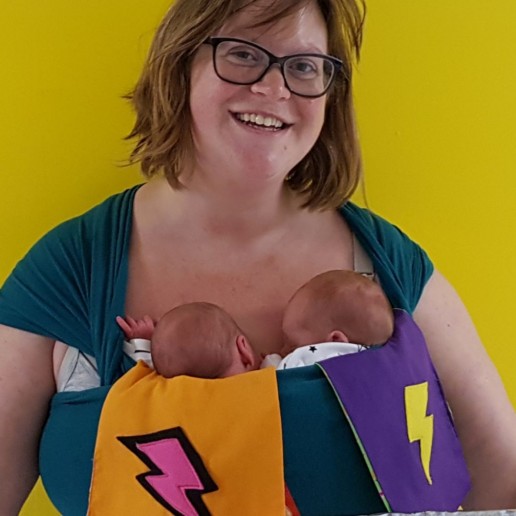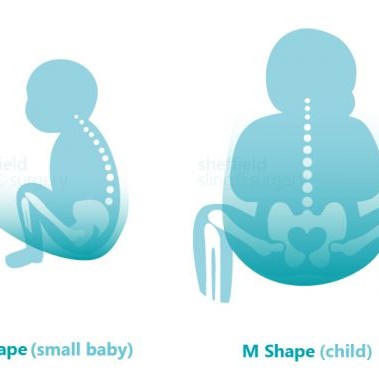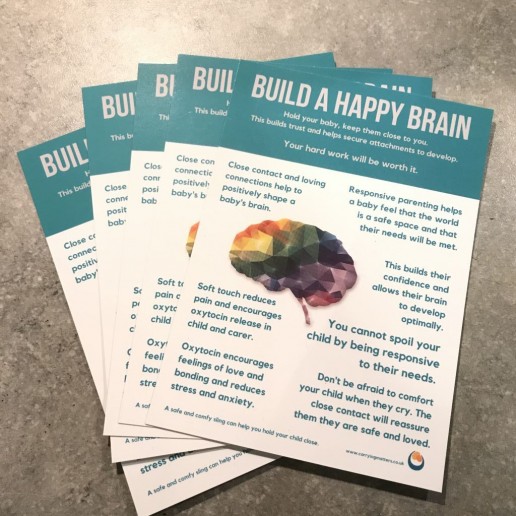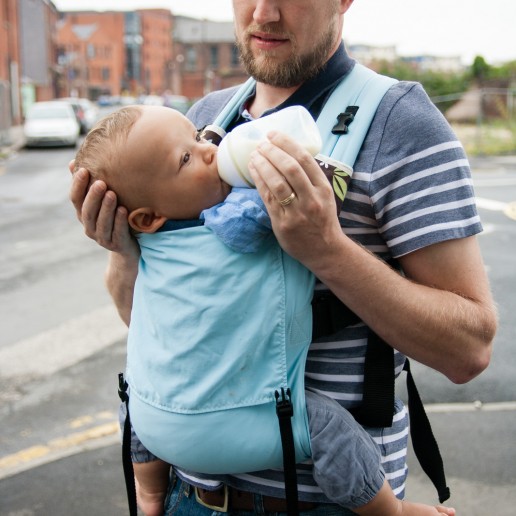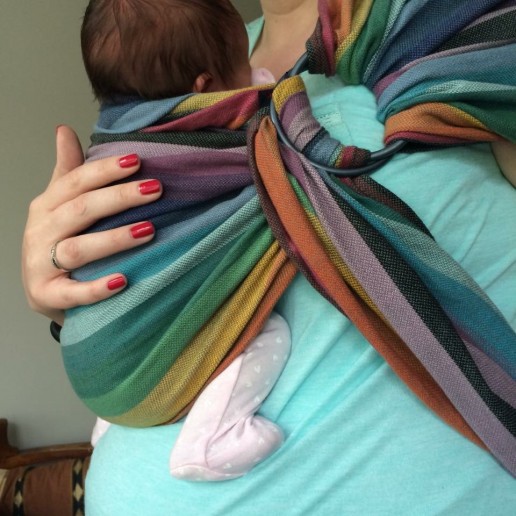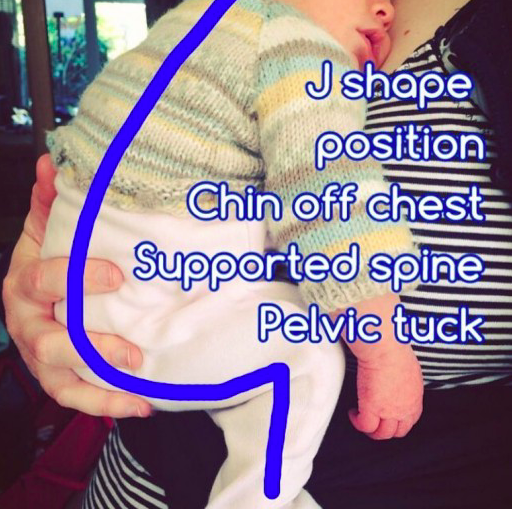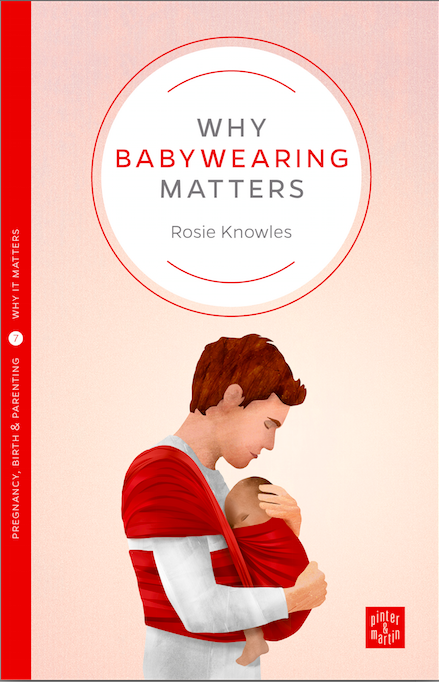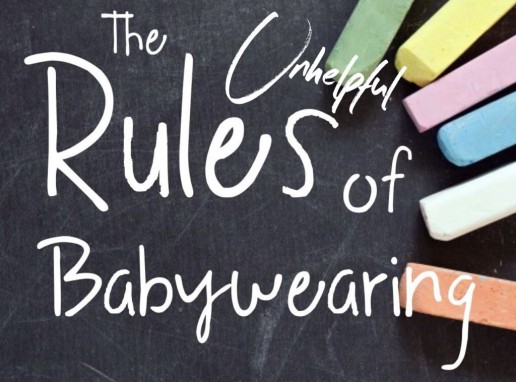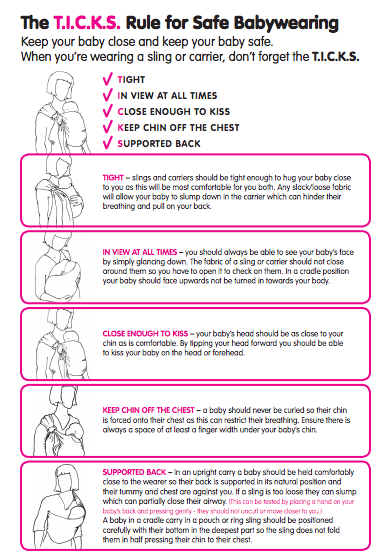Carrying Matters - all about babywearing safety, a guide to slings, and why connection matters
Welcome to the Carrying Matters website, run by the award-winning Dr Rosie Knowles.
It is important to support caregivers as they build a happy brain for their children. Soft touch and loving connections play a vital role in this. There are so many benefits of babywearing, which can be explored in this site. Babywearing safety matters; my guide to slings and my commitment to sling education will help parents and those who support them feel confident with sling use at every age.
Listen to Rosie talking about the 4th Trimester period in a new family’s life.
Search my website here
The positive effects of soft touch, close loving contact, and meaningful connections are enormous, and investment early on in family life is well worth it. Holding and carrying is connection; it matters to children, their carers, and society. The close contact helps to build a happy brain, and creates the relationships that buffer against adversity and promote resilience and long term positive health outcomes. It also helps mothers to survive the “4th Trimester” period and the months and years ahead. Here you can find everything you need to know about how to carry your baby safely and well, why babywearing is so normal and useful, how to choose a baby carrier, and help for all sorts of circumstances.
This page is run by Rosie Knowles, the author of the book Why Babywearing Matters (you can get a signed copy here). She is a GP in Sheffield, a carrying advocate and babywearing expert. She is passionate about supporting parents and carers to be close to their children; holding, soft touch and carrying matters in so many ways.
Recent Blog Posts
- Arms In or Out?
- Journeys to Recovery?
- Carrying a child with congenital heart disease, Abbie’s story
- Adversity and connectedness in the early months
- Parenting Criticism
- The importance of soft touch for infant development
- Babywearing in the time of Coronavirus
- “Babywearing for All”- helpful or harmful?
- Carrying with a weakened pelvic floor
- Babywearing and autistic caregivers
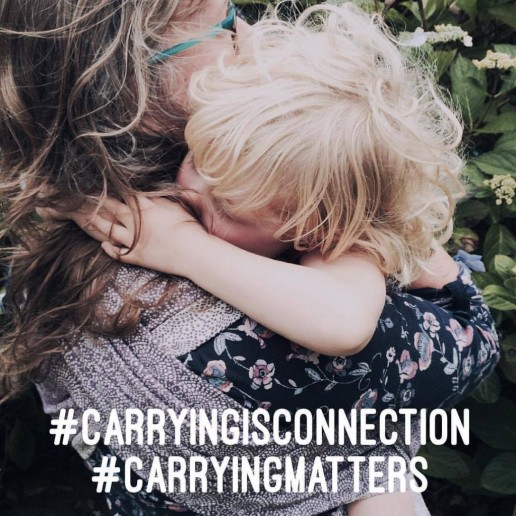
The simple act of connecting with a small person through the medium of loving touch has powerful and long-lasting effects on both child and carer. Babies need to be held close to encourage normal physiological and psychological development, especially in the early months. Every child needs love and connection to grow normally: the absence of responsive and supportive relationships that involve loving physical touch will hamper a child’s potential. Mothers heal best with their babies close to them.
Children thrive when they are carried, resilience builds and families flourish when the needs of all its members are met. Carrying is connection; carrying matters!
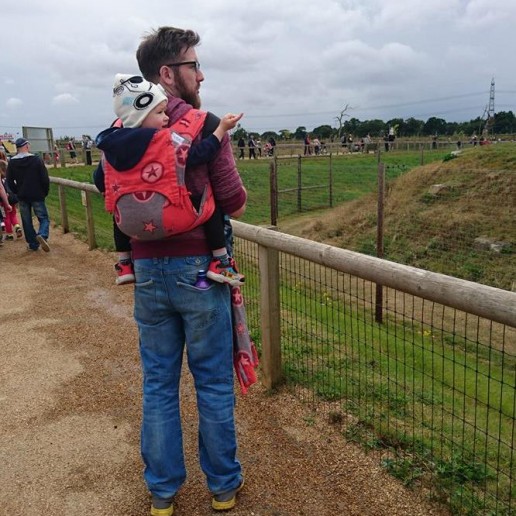
Keeping babies safe in any kind of baby sling or baby carrier is of paramount importance. The first most vital issue is to ensure that baby’s airway is open and unobstructed, with chin off the chest and the ribcage well supported. Babies’ temperatures should be considered too; they are surprisingly warm, and overheating can cause problems. Read more about sling safety here.
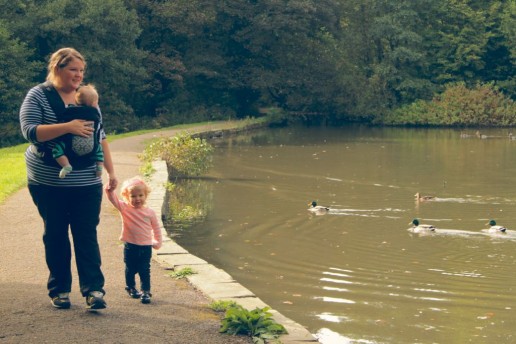
Secure attachment to other people is vital to human health and wellness; we thrive on relationship, on belonging. Such healthy attachments are the bedrock to future positive mental health and enjoyable relationships. However, 40% of children lack secure attachments, and are significantly disadvantaged. Encouraging carers to spend more time in close physical contact with their children is one way to improve children’s resilience and support everyone’s mental health. Soft touch is an essential part of building a happy brain and positive bonds that last a lifetime.
Read more about the importance of building secure attachments here, and how encouraging close physical contact can help build the resilience that children need to thrive despite adversity.
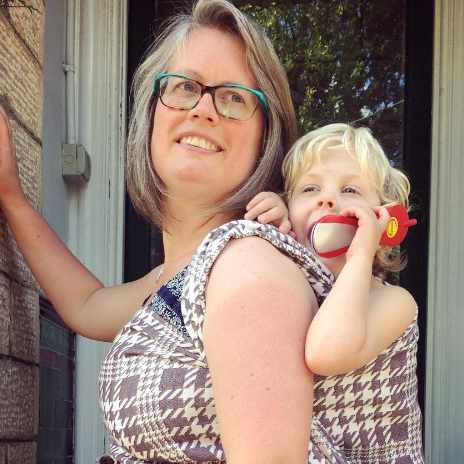
About Rosie
“I am a mum of 2, a family doctor in the UK (a GP), and a passionate advocate of building secure attachment relationships between children and their carers, due to the long lasting effects this has on future health. I believe that carrying children plays a large part in building such bonds, be it in arms or in a sling. With Carrying Matters, I focus on providing accessible information and education about this for parents and the professionals who support them. Sling and carrier use is not a new concept at all; but our Westernised society has lost the communal sharing of knowledge. We are no longer surrounded by a community of people who can help us get to grips with parenthood and share the load, so we need support in newer and more structured ways. This is what I do; empower people to keep their children close in a safe and positive way.”
Her book, “Why Babywearing Matters”, was published by Pinter and Martin in May 2016. It has been translated into several languages over recent years. She has written for a wide range of publications, including Juno Magazine, and has a regular freelance blogging role for Boba (links can be found in the Blog section).
She founded the Sling Pages, an independent website listing all the known sling professional resources in the UK and Eire, and the Building Bonds Project, a CIC supporting families in times of crisis and financial hardship to access good quality and safe carriers.
She is a practising GP in the UK with a particular interest in holistic medicine as well as children and women’s health and medical ethics. She began her career in hospital medicine but switched to general practice because of its flexibility with family life and the opportunities it presents to be more closely involved with communities, from cradle to grave. She has two children of her own, who have both been carried happily, and a husband who works alongside her at their local Sheffield premises. Rosie founded the Sheffield Sling Surgery and Library in 2013 and has supported thousands of parents across the South Yorkshire region, helped by a volunteer team of fantastic, committed parents who have found carrying their own children to be life-changing. They all want to help their fellow parents to discover this for themselves!
Rosie has won several awards for her work in this field; the Babywearing International Vijay Owens Babywearing Advocacy Award for Lifetime Achievement in Promoting Babywearing in 2016 and the 2019 Association for Infant Mental Health AIMH (UK) award in recognition of those who have highlighted and promoted infant mental health in their discipline.
Rosie developed the “Fourth Trimester” sling meet model with her colleague Lindsay Snow, focusing on the needs of parents with bumps to four months. Families often struggle to deal with the biological needs of their new baby within the confined structures and expectations of modern society, which can be damaging to the building of secure attachments.
The needs of baby and caregivers are both important, as is the mental health and happiness of the whole family. Human beings were not designed to live in small isolated units but in supportive social groupings.
Holding babies close (in arms or in a soft sling) can be a very useful tool for families struggling with mental health disorders, pre, peri or postnatally. The close contact and the soft touch has biochemical hormonal effects that can help to reduce anxiety, improve feelings of wellbeing and connection, as well as lifting the mood. Read more about this here.
You can find your local sling library or sling meet by searching the Sling Pages resource, get in touch with them!

Using a sling (carrier) helps parents to keep their child as close as their biology needs, while also being able to function as adults in a demanding and inflexible world.
Rosie trains carrying advocates and sling/carrier peer supporters and sling consultants, running courses in Sheffield and nearby. She has trained health care professionals, sling librarians, fitness course leaders and interested parents. See more here.
She lectures at conferences and gatherings around the UK and Europe about a range of topics, all related to early years parenting and how slings and carriers can make a huge difference to babies, their carers and to society.
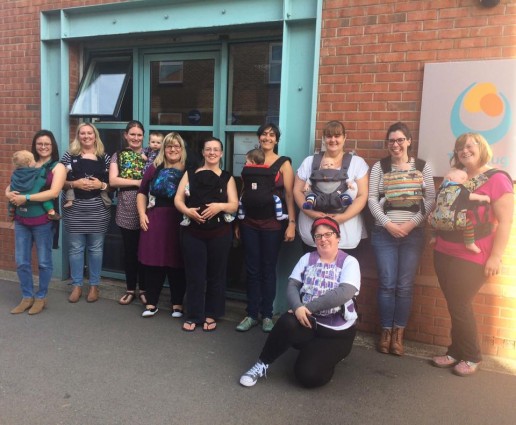
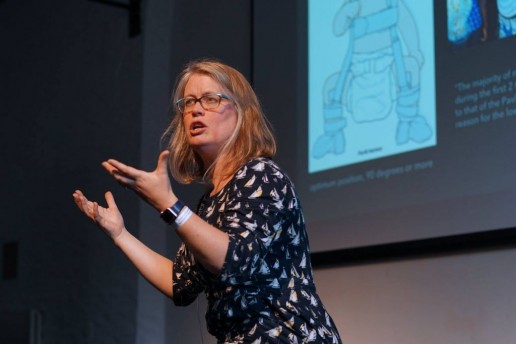
“I’d highly recommend any enthusiast to attend this course. I found it thoroughly enjoyable and look forward to being able to use this new knowledge to help more parents discover the benefits of babywearing, as I have.”
“Rosie is a wonderful teacher, very clear and good at explaining. I felt she was well educated in her field and able to answer any question thrown at her. Also very friendly which made me feel comfortable and relaxed in a learning environment and confident to ask questions.”
The unhelpful "rules" of babywearing
There are so many unhelpful rules of babywearing. I'm not talking about basic safety guidelines, but about the unspoken rules about how things must be done.This needs addressing. I love babywearing. I love how special it is. I love how empowering and enabling it can be and what a difference it can make to children and their carers and the society around them.
I also love that it just makes life work for so many people on a practical level, regardless of all the benefits and reasons about why it is an activity that matters. Babywearing may be magical for many, and has so many positive effects on a physiological and neurological level, but really, for some, it’s just about getting stuff done, keeping the cogwheels of daily life turning, or helping to survive very tough situations.
I have watched thousands of people carrying their children all around the world and I love that I am part of a tradition of child rearing that goes back beyond the history books into our anthropological origins. I love it so much that I wrote a book all about it!
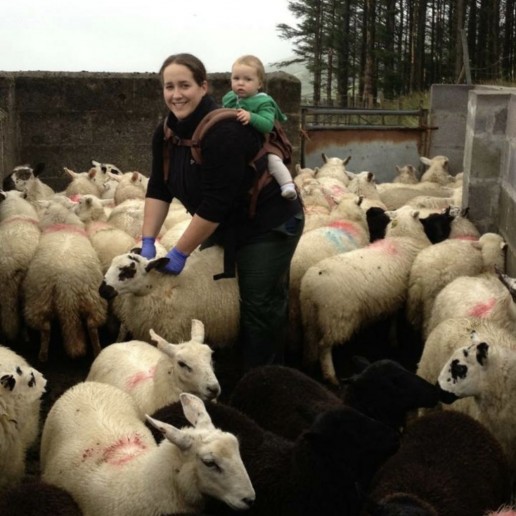
Carrying children is normal human behaviour, and it isn’t, and shouldn’t be, complicated or difficult. It shouldn’t be scary, inaccessible or expensive. It does not belong to groups of people to “own” or to build tall walls around to make things secret or elitist. Babywearing (the use of a sling or carrier to keep a child safe and close to a parent) is for everyone, every gender, every colour, every ability, every size, every shape. Babywearing should bring us together, not divide us. It should not alienate or exclude entire groups of people.
However, as the practice becomes more mainstream and the industry grows, this alienation is unfortunately happening more and more often. Marketing campaigns and the general make-up of many babywearing groups suggests that this is an activity for relatively well-off middle class “standard sized” white women in nuclear families, carrying able-bodied and healthy children. This is a direction that needs to be arrested before it becomes too entrenched. I’ll say it again, babywearing is for everyone and can be done in so many ways.
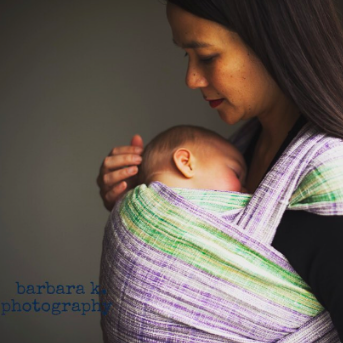
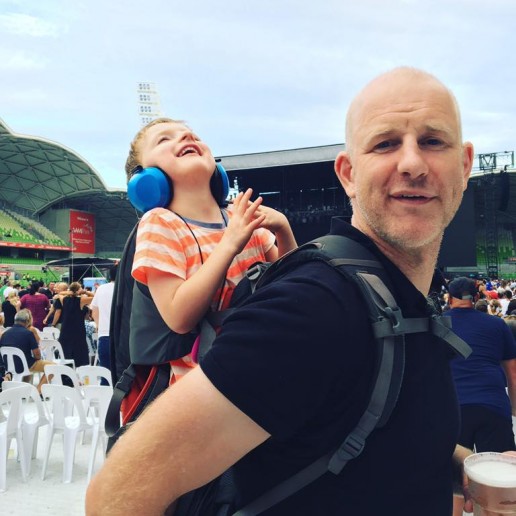
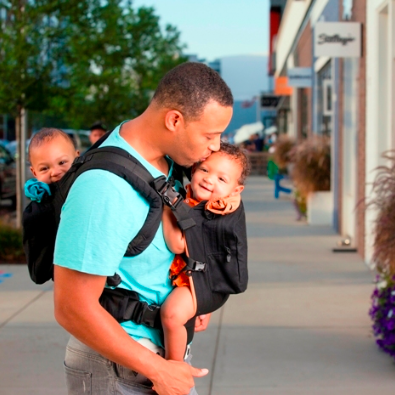
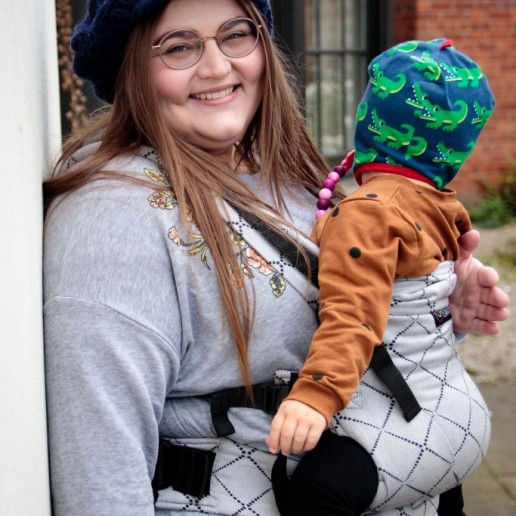
One way that babywearing can become elitist is in the development of complex rules, and I’d like to have a discussion about some of these “rules” and “guides” of babywearing that I am seeing shared around. I understand that it can feel reassuring to have black and white lists of what you can and can’t do, and schedules for certain types of carrying. These can act as a framework for where to begin with using a sling. This is valuable, especially as many of us have lost the shared collective wisdom that comes from living in communities and no longer learn how to parent from the people living around us. Many of us turn to books and to the internet and ask for guidance.
However, I think these “rules” often end up making things harder and disempowering the very people who need the most support. Here are some common examples.
Some commonly stated "Rules"
- Do not use a stretchy wrap beyond three months
- Do not back carry with a stretchy wrap
- Do not use a soft structured carrier for a newborn
- Do not do any form of sideways cradle carry
- Do not use a narrow based carrier
- Do not face your child out in a carrier
- Do not back carry a baby before they can sit unaided
- Do not back carry a newborn in a ring sling
- Low back carries are dangerous, high back carries are much better
- Once your baby is walking you must begin to use a toddler-size carrier
- Bigger children must be carried on the back
- Do not use footed pyjamas for babies in slings
I could go on…
These rules can be useful, but often they exclude significant proportions of the population. You can use a stretchy wrap to carry an older child, if they are safe and comfy. You can use your stretchy wrap in many ways, including on the back, if your child is safe and comfy. You can use a soft structured carrier for a newborn, if it fits them and is safe and comfy. You can carry a child in a sideways seated position or even a cradle carry, and facing out, if they are safe and comfy. You can use a narrow based carrier for a baby or a baby sized carrier for a toddler, if they are safe and comfy. You can carry a baby on your back in any form of carrier if they are safe and comfy. You can carry any age baby on your back or your front if they are safe and comfy. You can carry your child who is wearing footed pyjamas if the child is safe and comfy (ie their toes have room to wiggle). You can carry your child whatever size you are. In fact, you can do pretty much anything you want to do, if your baby is safe and comfy.
Do you get the theme?
Is your baby safe and comfy? Do you feel confident caring for your child with your carrier? Then carry right on!
I think the only “rules” when it comes to carrying a child in any form of sling are
- Can they breathe safely and without any obstruction at all times?
- Are they being held safely and securely in a carrier that fits (to ensure they are able to breathe easily and cannot slump into a position that would obstruct their airway)?
- Are they as comfortable as the circumstances allow?
How do you check if a child is breathing safely in the carrier?
- Look at them, listen to them, be aware of them.
- Check their airways are free of any fabric and they are not slumping or folded over with their ribcage compressed and chin on the chest.
How do you ensure they are safe and snug in the carrier and that it fits?
- A well fitting carrier holds a child close to the parent, close enough that if the parent leans forwards, the child does not swing free. This helps to avoid slumping over in the carrier.
- If a child’s body can slump, the carrier does not fit or is not tight enough.
- The “knee to knee” rule is often overstated in its importance for older children (the M shape can be protective for children at risk of hip dysplasia in the early months.)
How do you ensure they are comfortable in the carrier?
- This is all about being responsive and connected to the child being carried.
- They should fit inside the carrier, be able to breathe safely, and should not be too hot (overheated babies are more likely to stop breathing).
- Check on your child, be aware of their experience and how they are behaving in the carrier. The more you interact with your child the more you will know that they are OK (or not!)
If your baby is safe, able to breathe and is comfortable, and you feel confident that all is well, then it probably is well. Carry right on! And if you would like some encouragement, find a friendly educator and help them learn how to support you in a way that builds you up and keeps you carrying happily.
Real life is lived in the grey areas, in between the black and white.
It is important to remember that every child and every parent has different needs. Parents of twins may need to be able to back carry one twin from a very early age, to be able to cope with family life. They may choose to use a buckle carrier on the back, and if the child is able to breathe safely and is not uncomfortable then that makes their lives work. Telling them this is forbidden creates needless barriers and makes life harder. A stretchy wrap for a one year old may not be as comfortable as a woven wrap, but for a parent on a budget who now has a less-unhappy toddler held close while the baby can be cleaned, this is a win-win situation. A four month old who will will only tolerate facing out in a narrow based carrier can be happily transported on a school run. Millions of women around the world have carried young babies in low torso carries with simple pieces of cloth. A disabled child who cannot sit unaided can be held safely and securely on the back in several types of carrier which will definitely make everything much easier. Do be aware of how your language and how you educate can affect others and significantly disempower people.
“Oh, but these rules are for normal people!” This is a common dismissal of any criticism of “rules” and is unbelievably inappropriate. Our society is made up of people of all abilities and all skills. More than one billion people in today’s world have a disability; that’s 15% of the population. This ratio may not be reflected in the proportion of children who are brought to babywearing groups, just like people of colour are missing from these gatherings. The fault is not theirs; it is ours. We must be more inclusive and we must make efforts to reach out to people. Just imagine how different things could be, if some of these walls of prejudice were pulled down from the inside.
Grainne and Tessa are a great example of how babywearing can actually empower beyond the “rules.” Little Tessa was born without a nose (arhinia) and had to have a tracheostomy when she was very young. Her family were told that she was safest to be sleeping in a separate room with various wires and monitors attached to her for any alerts in a change of breathing. In fact, Grainne decided to wear Tessa in a sling, keeping her close and safe and visible at all times; if Tessa stopped breathing, Grainne would see it and feel it as it happened, thanks to the sling (read more about them here.) The sling made life work for them, and also made it much happier during some very tough times. Common sense, knowledge of safety and a willingness to bend the rules worked together to enhance their lives, when they could so easily have missed out.
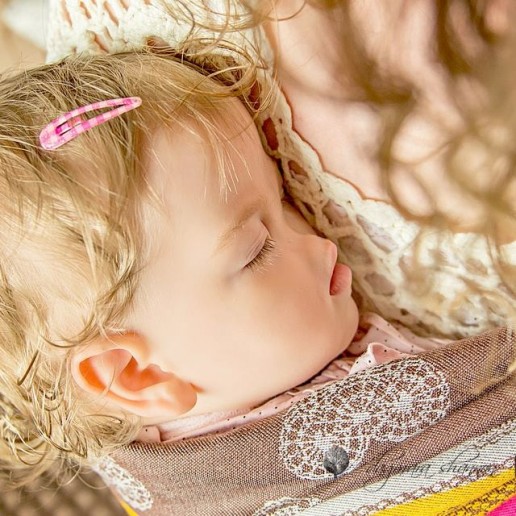
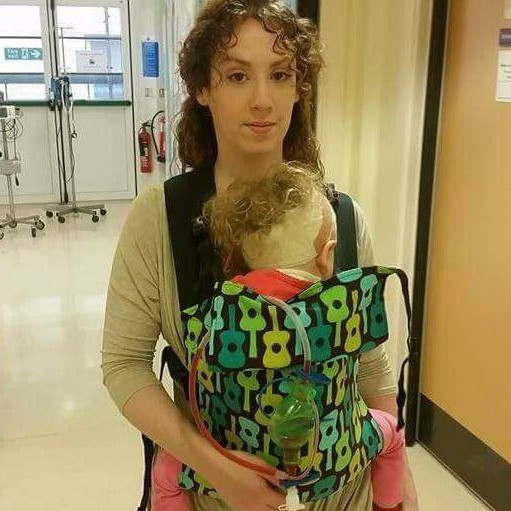
This is a superb blog for further reading; all about ableism in the babywearing community and I urge you to read it.
http://bindungtraegt.de/ableismback-wearing/
Please also read the Tania Talks blog posts on babywearing (she is a wheelchair user)
https://www.whentaniatalks.com/the-realities-of-back-carrying-as-a-wheelchair-user/
https://www.whentaniatalks.com/back-carrying-as-a-wheelchair-user/

